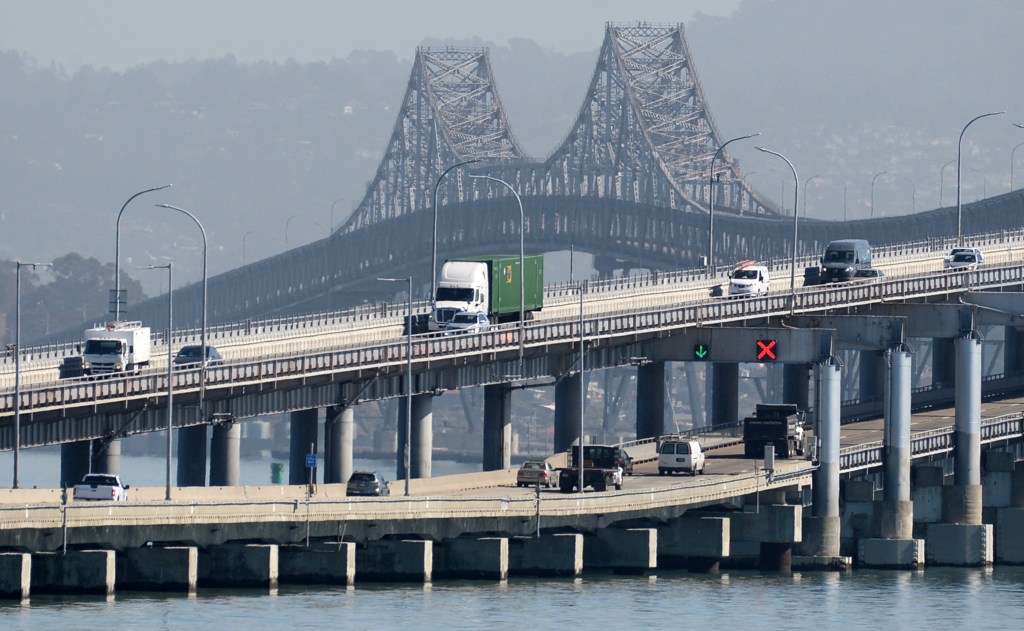
California air quality regulators late Friday approved a plan to strengthen limits on the planet-warming emissions from gasoline and diesel fuels, a move expected to raise gas prices but bring public health benefits.
Members of the California Air Resources Board approved amendments to the state low carbon fuel standard during a Friday meeting in Riverside that stretched 11 hours and featured scores of public speakers. Twelve of the appointed board members voted for the changes and two voted against. The new standard will carry lower limits for the carbon intensity of transportation fuels that can be sold in the state without penalty.
The tougher regulations will reduce asthma symptoms for more than 70,000 Californians, according to the board’s estimate, and pump $100 billion of private investment into clean energy infrastructure over the next two decades. Board chair Liane Randolph said that will help protect residents from air pollution and climate-fueled natural disasters — as well as price hikes by gas companies.
“We cannot afford to continue with the status quo,” Randolph said.
But the change is controversial. State Republicans have pilloried the board and Governor Gavin Newsom, whose appointees dominate the board, for driving up gas prices, a hot-button issue throughout the state, which currently has the country’s second-highest price per gallon, behind only Hawaii, according to AAA.
The vote came amid a moment of intense political debate about inflation. That helped fuel the walloping Democrats received locally and nationally in Tuesday’s election, observers say.
It also comes a month after a special legislative session that saw Democrats pass a plan to create a state fuel reserve. The board decides air pollution and climate policy for California, which is often followed by other states. Of its 16 members, 12 were appointed by Newsom and confirmed by the state Senate. The other members are appointed by state lawmakers.
Last year, the board estimated that the proposed change could drive a 47-cent price increase in 2025 that could reach 79 cents in 2035, as refineries pass costs to customers. CARB’s executive officer, Steven Cliff, and board staff now say it’s impossible to know if the changes will raise gas prices.
Currently, the fuel standard adds about 8 cents per gallon of gas, said Aaron Smith, an economics professor at University of California, Davis. He estimates that the toughened regulations could add between 20 and 84 cents per gallon by 2030, depending on the regulatory market.
“We do not need lower CARB emissions — good grief!” said California resident Melanie Arace in a public comment. “If this is all about the air quality, one sliver of our country isn’t going to clean the air of the entire planet. Quit taxing us to death!”
Environmentalists and economists said the program is flawed in its design during the marathon meeting on Friday, when more than 100 people spoke to the board. Many were parents of children with lung diseases and environmental justice activists who said the standard doesn’t go far enough to reduce air pollution and climate change.
Although California prioritizes the adoption of electric vehicles, the lion’s share of the $22 billion of private investment generated by the fuel standard has largely benefited biofuels companies. That’s helping fund deforestation and large-scale dairy farms, the critics said.
“We need clean air,” Jose Avalos, a San Bernardino resident and member of the People’s Collective for Environmental Justice, told the board. “Both you and I know that these fuels are generating polluting emissions that lead to more people suffering from asthma and cancer.”
Biofuels companies, including Nebraska ag-tech giant Green Plains and Brazil-based Raízen, urged the board to approve the new standard.
The fuel standard sets a limit for the carbon intensity of fuels. Companies that abide by the limits earn credits, and companies that don’t — like oil refineries — must buy credits from those that do. Over time, the limit decreases.
The new standard lowers carbon intensity limits and accelerates those limits into the 2040s. The limit will increase by 10% in 2030 and decline to 90% in 2045.
The board says the standard has driven major changes in the state’s fuel market — in particular, the rapid adoption of renewable diesel made from vegetable oil. Two Bay Area petroleum refineries are currently being converted to produce renewable diesel.
The rapid adoption of renewable diesel produced a glut of credits, which reduced the incentives under the program, experts told Bay Area News Group. That’s one reason why the board lowered the standard.
Renewable diesel is considered lower-carbon than traditional diesel and has come to dominate the state’s market for heavy truck fuels. However, it’s increasingly made from palm oil and soybean oil produced abroad in deforested areas. Loss of forest globally is a critical threat to biodiversity and climate change.
In response, the board is implementing “guardrails” that limit the use of these oils in renewable diesel produced through the standard. But the rule is unlikely to prevent deforestation abroad because this international market is booming, Colin Murphy, co-Director of the UC Davis Low Carbon Fuel Policy Research Initiative, said in a public comment.
On Thursday, the board delayed a planned hearing on fuel standards for gas-powered motorcycles and what would be the nation’s first requirements for the sale of electric motorcycles.

















































